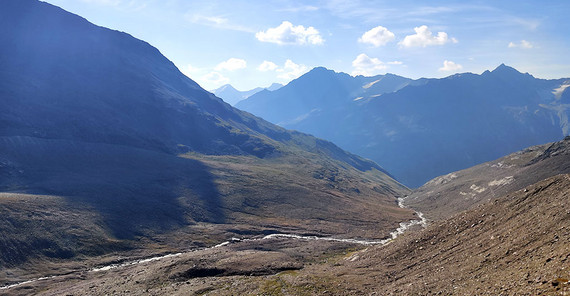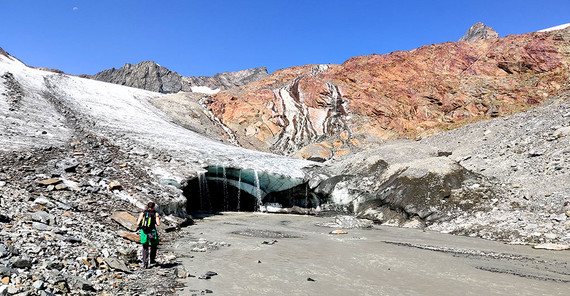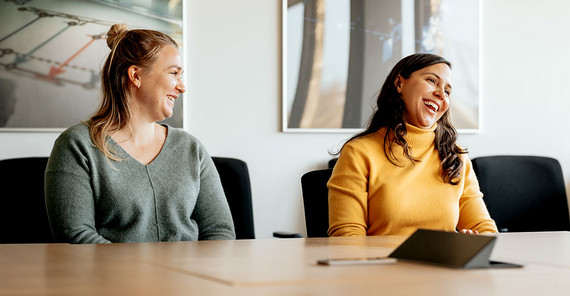“A natural hazard is a physical process that negatively impacts society,” says Lisa Luna, a PhD student in the second cohort of NatRiskChange, which started in 2018. Some of the PhD students are looking at the risks posed by landslides. Others are investigating the risks of floods, droughts, heavy rainfall, or earthquakes. In addition to assessing hazard, they also research the risks, that is, the possible effects and damage caused by natural events. The primary question here is vulnerability: How resilient is society to a particular hazard? “For example, how might a flood in a certain area affect the people and infrastructure there?” Luna summarizes. Her own project focuses on how to better predict landslides. “So far, I’ve looked at the seasonality of landslides, i.e. during which times of the year they are more or less likely to occur, and how many can be expected.”
The water engineer Joaquin Vicente Ferrer, on the other hand, is interested in the anthropogenic triggers of landslides, i.e. whether changes in land use by humans result in more landslides. “It is quite conceivable that companies build a dam downstream without knowing that this can trigger a large landslide elsewhere along the river.” In recent years, he already dealt with various natural disasters such as floods, typhoons, and tsunamis. “In my doctoral thesis, I am now looking at the largest landslides worldwide. These have always interested me,” he says. “They have a low probability but can have devastating impacts.”
Like Ferrer, Amelie Skålevåg started her doctoral studies in 2021 with the third cohort of “NatRiskChange”. She is researching changes in freeze-thaw regimes in alpine regions and the effects of global warming on glacier retreat and erosion processes. “I want to know how temperature change in high mountain regions affects sediment production and influences the dynamics of the system,” she says. To this end, she has conducted fieldwork in the Tyrolean Ötztal. With the help of statistical methods, she wants to determine and analyze trends in these processes.
Very close with the help of task forces
To ensure that the PhD students in the Research Training Group work together in an interdisciplinary way and also contribute to the understanding of current damaging events, application-related task forces have been set up as an integrative part of the qualification program. “In a task force, PhD students and supervisors come together to work on a recent natural hazard that has come to their attention,” Luna summarizes. “This was one of the highlights of my PhD years.” Skålevåg adds, “Whoever is interested and has time can contribute. In the end, there has to be a product such as a report, a publication, or a website.” PhD students are required to participate in at least one task force during their time with the research training group. In recent years, task forces were set up following the Eifel floods in Germany in summer 2021 and the 2019/20 wildfires in Australia, among other events. In a current task force, Ferrer is investigating flash floods in Italy in summer 2022. “Coming together to see what others are doing and what methods they are using gives me new insights for my own project,” he explains.
Another applied research opportunity arose for Luna when she was able to contribute to an early warning system for landslides. In a joint project with the University of Oregon, her knowledge of statistical modelling was implemented in a real-time online dashboard that estimates landslide hazard based on observed rainfall data and weather forecasts in the city of Sitka, in southeast Alaska, USA. “I really liked the applied aspect,” she says. “I thought if we did our job well, we could really get better information about landslide risk in Sitka.”
Strong team spirit
The PhD students agree that the most important aspect of working in the Research Training Group is the supportive network of young researchers. “The collaborative concept of NatRiskChange was a big motivation for me to do a doctorate in the first place,” says Skålevåg. “We are lucky to always be able to exchange ideas with the PhD students from the first two cohorts,” adds Ferrer. “This overlap made me feel less lost in my first year.” Networking among the PhD students is also promoted by two- to three-day closed-session meetings held twice a year, where all projects are discussed with the supervisors. “This not only promotes team spirit but also an interdisciplinary understanding and better management of natural hazards,” Prof. Thieken is convinced. The network, which was built over the past few years, is also a great asset for the future of natural hazard research worldwide. Some alumni carry the ideas and concepts of the Research Training Group into international companies or other research institutions. Among other things, the University of Potsdam’s collaboration with the Indian Institute of Technology Roorkee was intensified in this way and is to be continued in future joint projects.
The Researchers
Prof. Dr. Annegret Thieken studied geoecology at Technische Universität Braunschweig and environmental sciences at the University of Amsterdam. Since 2011, she has been the head of the working group Geography and Disaster Risk Research at the University of Potsdam. She is the Speaker of “NatRiskChange”.
E-Mail: annegret.thiekenuuni-potsdampde
Lisa Luna studied geology at Middlebury College (USA) and geosciences at the University of Potsdam. Since 2019, she has been doing her doctorate in the Research Training Group “NatRiskChange” on improving predictions of landslides.
E-Mail: lisa.lunauuni-potsdampde
Joaquin Vicente Ferrer studied water science and water technology at IHE Delft Institute for Water Education and civil engineering at the University of the Philippines Diliman. Since 2021, he has been doing his doctorate in the Research Training Group “NatRiskChange” on predictions of large landslides in a changing world.
E-Mail: joaquin.vicente.consunji.ferreruuni-potsdampde
Amalie Skålevåg studied geoecology at the University of Potsdam and environmental modelling at University College London. Since 2021, she has been doing her doctorate in the Research Training Group “NatRiskChange” on changing water and energy conditions and their relevance for water and sediment transports in the Alpine areas.
E-Mail: amalie.skalevag.1uuni-potsdampde
The Project
The Research Training Group “NatRiskChange” researches natural hazards and risks in the face of changing conditions in the environment and society.
Participants: Potsdam Institute for Climate Impact Research (PIK),
Helmholtz Centre Potsdam – German Research Centre for Geosciences GFZ,
Freie Universität Berlin and Helmholtz Centre for Environmental Research (UFZ)
Funding: German Research Foundation (DFG)
Duration: 2015–2024
www.uni-potsdam.de/en/natriskchange
This text was published in the university magazine Portal Wissen - Eins 2023 „Lernen“ (PDF).



